This Week in Labor History
December 04
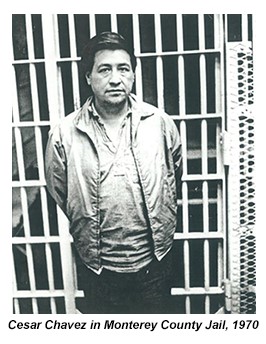 President Roosevelt announces the end of the Works Progress Administration (WPA), concluding the four-year run of one of the American government’s most ambitious public works programs. It helped create jobs for roughly 8.5 million people during the Great Depression and left a legacy of highways and public buildings, among other public gains – 1943UAW President Walter Reuther elected president of the Congress of Industrial Organizations – 1952 President Roosevelt announces the end of the Works Progress Administration (WPA), concluding the four-year run of one of the American government’s most ambitious public works programs. It helped create jobs for roughly 8.5 million people during the Great Depression and left a legacy of highways and public buildings, among other public gains – 1943UAW President Walter Reuther elected president of the Congress of Industrial Organizations – 1952
Cesar Chavez jailed for 20 days for refusing to end United Farm Workers’ grape boycott – 1970
December 05
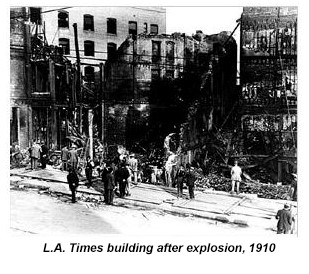 Unionists John T. and James B. McNamara are sentenced to 15 years and life, respectively, after confessing to dynamiting the Los Angeles Times building during a drive to unionize the metal trades in the city. They placed the bomb in an alley next to the building, set to detonate when they thought the building would be empty; it went off early, and an unanticipated gas explosion and fire did the real damage, killing twenty people. The newspaper was strongly conservative and anti-union – 1911 Unionists John T. and James B. McNamara are sentenced to 15 years and life, respectively, after confessing to dynamiting the Los Angeles Times building during a drive to unionize the metal trades in the city. They placed the bomb in an alley next to the building, set to detonate when they thought the building would be empty; it went off early, and an unanticipated gas explosion and fire did the real damage, killing twenty people. The newspaper was strongly conservative and anti-union – 1911
Ending a 20-year split, the two largest labor federations in the U.S. merge to form the AFL-CIO, with a membership estimated at 15 million – 1955
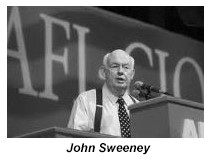 AFL-CIO President John Sweeney welcomes the collapse of World Trade Organization talks in Seattle, declaring, “No deal is better than a bad deal.” – 1999 AFL-CIO President John Sweeney welcomes the collapse of World Trade Organization talks in Seattle, declaring, “No deal is better than a bad deal.” – 1999
The U.S. Department of Labor reports employers slashed 533,000 jobs the month before—the most in 34 years—as the Great Recession surged. The unemployment rolls had risen for seven months before that and were to continue to soar for another 10 months before topping 10 percent and beginning to level off late the following year – 2008
December 06
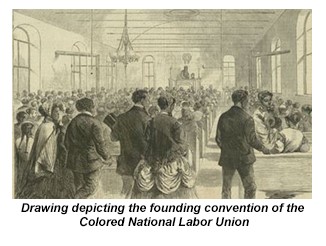 African-American delegates meet in Washington, D.C., to form the Colored National Labor Union as a branch of the all-White National Labor Union created three years earlier. Unlike the NLU, the CNLU welcomed members of all races. Isaac Myers was the CNLU’s founding president; Frederick Douglass became president in 1872 – 1869 African-American delegates meet in Washington, D.C., to form the Colored National Labor Union as a branch of the all-White National Labor Union created three years earlier. Unlike the NLU, the CNLU welcomed members of all races. Isaac Myers was the CNLU’s founding president; Frederick Douglass became president in 1872 – 1869
The Washington Monument is completed in Washington, D.C. On the interior of the monument are 193 commemorative stones, donated by numerous governments and organizations from all over the world; one of them is from the Int’l Typographical Union, founded in 1852. In 1986 the ITU merged into the Communications Workers of America – 1884
A total of 361 coal miners die at Monongah, W.Va., in nation’s worst mining disaster – 1907
Int’l Glove Workers Union of America merges into Amalgamated Clothing Workers – 1961
United Mine Workers begin what is to become a 110-day national coal strike – 1997
December 07
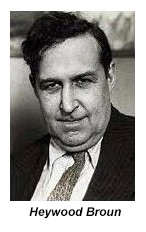 Heywood Broun born in New York City. Journalist, columnist and co-founder, in 1933, of The Newspaper Guild – 1888 Heywood Broun born in New York City. Journalist, columnist and co-founder, in 1933, of The Newspaper Guild – 1888
Steam boiler operators from 11 cities across the country meet in Chicago to form the National Union of Steam Engineers of America, the forerunner to the Int’l Union of Operating Engineers. Each of the men represented a local union of 40 members or fewer – 1896
More than 1,600 protesters staged a national hunger march on Washington, D.C., to present demands for unemployment insurance – 1931
United Hatters, Cap & Millinery Workers Int’l Union merges into Amalgamated Clothing & Textile Workers Union – 1982
 Delegates to the founding convention of the National Nurses United (NNU) in Phoenix, Ariz., unanimously endorse the creation of the largest union and professional organization of registered nurses in U.S. history. The 150,000-member union is the product of a merger of three groups – 2009 Delegates to the founding convention of the National Nurses United (NNU) in Phoenix, Ariz., unanimously endorse the creation of the largest union and professional organization of registered nurses in U.S. history. The 150,000-member union is the product of a merger of three groups – 2009
December 08
Twenty-five unions found the American Federation of Labor (AFL) in Columbus, Ohio; Cigarmaker’s union leader Samuel Gompers is elected president. The AFL’s founding document’s preamble reads: “A struggle is going on in all of the civilized world between oppressors and oppressed of all countries, between capitalist and laborer…” – 1886
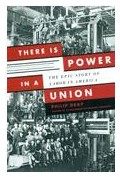 (There is Power in a Union: The Epic Story of Labor in America: This thoughtful and highly readable history of the American labor movement traces unionism from the textile mills of Lowell, Massachusetts in the 1820s to organized labor’s decline in the 1980s and struggle for survival and growth today. Illustrated with dozens of photos, posters and more.) (There is Power in a Union: The Epic Story of Labor in America: This thoughtful and highly readable history of the American labor movement traces unionism from the textile mills of Lowell, Massachusetts in the 1820s to organized labor’s decline in the 1980s and struggle for survival and growth today. Illustrated with dozens of photos, posters and more.)
114-day newspaper strike begins, New York City – 1962
President Bill Clinton signs The North American Free Trade Agreement (NAFTA) – 1993
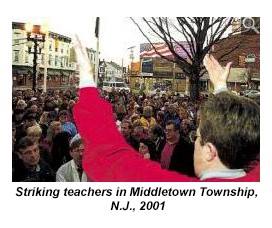 Nearly 230 jailed teachers—about one-fourth of the 1,000-member Middletown Township, N.J., staff—are ordered freed after they and their colleagues agree to end a 9-day strike and go into mediation with the local school board – 2001 Nearly 230 jailed teachers—about one-fourth of the 1,000-member Middletown Township, N.J., staff—are ordered freed after they and their colleagues agree to end a 9-day strike and go into mediation with the local school board – 2001
Faced with a national unemployment rate of 10 percent, President Barack Obama outlines new multibillion-dollar stimulus and jobs proposals, saying the country must continue to “spend our way out of this recession” until more Americans are back at work. Joblessness had soared 6 percent in the final two years of George W. Bush’s presidency – 2009
December 09
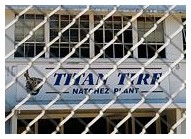 Ratification of a new labor agreement at Titan Tire of Natchez, Miss., ends the longest strike in the history of the U.S. tire industry, which began May 1, 1998, at the company’s Des Moines, Iowa, plant – 2001 Ratification of a new labor agreement at Titan Tire of Natchez, Miss., ends the longest strike in the history of the U.S. tire industry, which began May 1, 1998, at the company’s Des Moines, Iowa, plant – 2001
December 10
First sit-down strike in U.S. called by IWW at General Electric in Schenectady, N.Y. – 1906
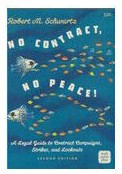
(No Contract, No Peace: A Legal Guide to Contract Campaigns, Strikes, and Lockouts is a must-have for any union or activist considering aggressive action to combat management’s growing economic war against workers. No Contract, No Peace! updates information contained in the first edition, entitled Strikes, Picketing and Inside Campaigns, to include reference to recent union activities and NLRB decisions that have affected the labor relations environment. Schwartz’s familiarity with labor and employment law combines with his activist spirit to provide innovative yet practical tips for mounting and maintaining meaningful campaigns designed to build union and workers’ power.)
Int’l Human Rights Day, commemorating the signing at the United Nations of the Universal Declaration of Human Rights, which states, in part: “Everyone has the right to form and join trade unions for the protection of his interests.” – 1948
American Federation of Teachers Local 89 in Atlanta, Georgia, disaffiliates from the national union because of an AFT directive that all its locals integrate. A year later, the AFT expelled all locals that refused to do so – 1956
—Compiled and edited by David Prosten |
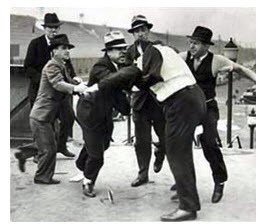 Almost all current union members were hired into an already represented workplace. But while you personally may have played no role in unionizing your place of work, you can’t assume that those who did had an easy time of it. In the early decades of union organizing in the U.S., it was not unusual for employers to respond to union organizing drives with physical violence. Many of the early industrial unions got their footholds only by standing up to a court system that jailed union supporters, and to the clubs and guns of company thugs. Sometimes the bullets that maimed and killed union supporters and their families were fired by state militias or federal troops, serving as private armies for anti-union employers. Once the union comes in, one battle may be over but the war is far from won. In about one third of newly organized workplaces, using stall and delay tactics, the employer succeeds in preventing the union from ever winning a first contract.
Almost all current union members were hired into an already represented workplace. But while you personally may have played no role in unionizing your place of work, you can’t assume that those who did had an easy time of it. In the early decades of union organizing in the U.S., it was not unusual for employers to respond to union organizing drives with physical violence. Many of the early industrial unions got their footholds only by standing up to a court system that jailed union supporters, and to the clubs and guns of company thugs. Sometimes the bullets that maimed and killed union supporters and their families were fired by state militias or federal troops, serving as private armies for anti-union employers. Once the union comes in, one battle may be over but the war is far from won. In about one third of newly organized workplaces, using stall and delay tactics, the employer succeeds in preventing the union from ever winning a first contract.









